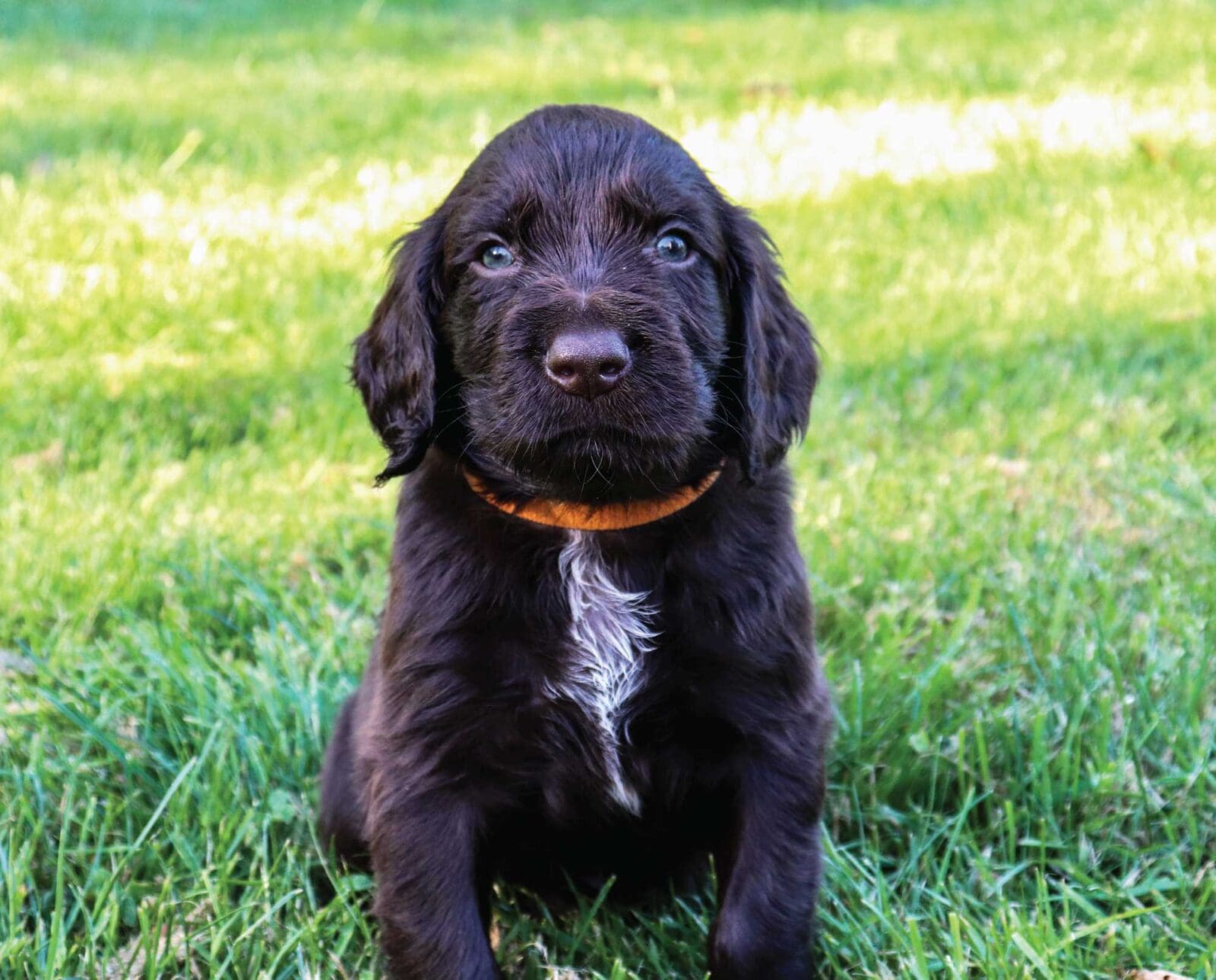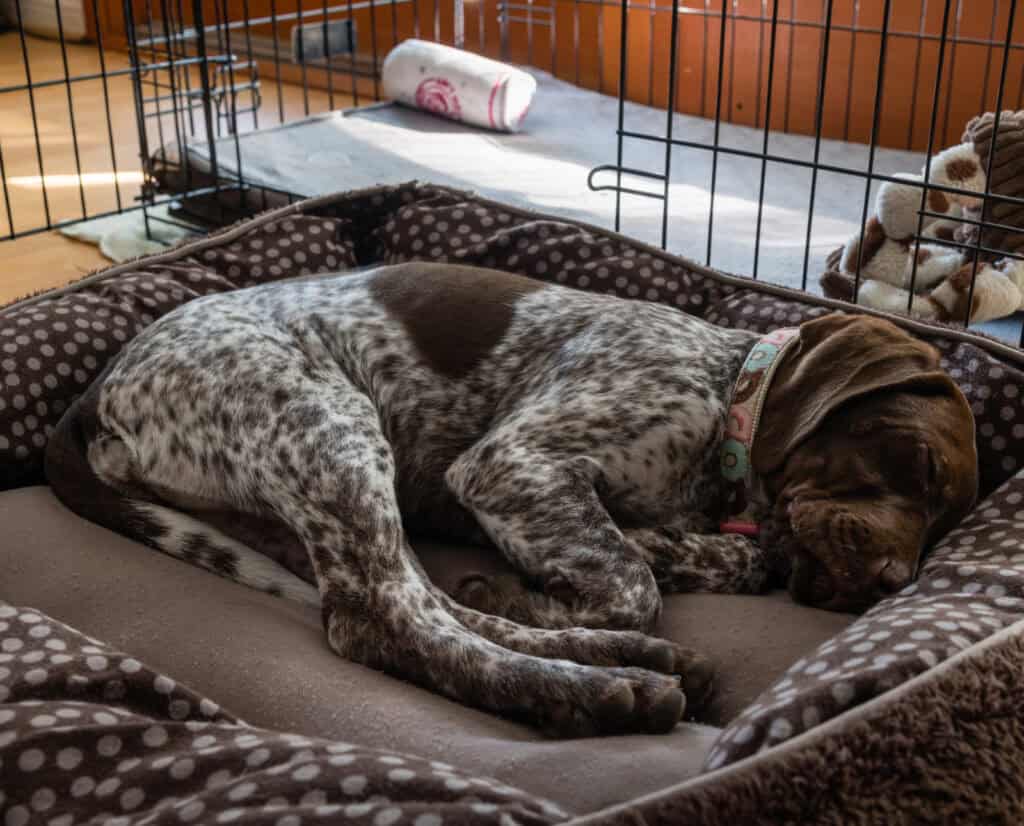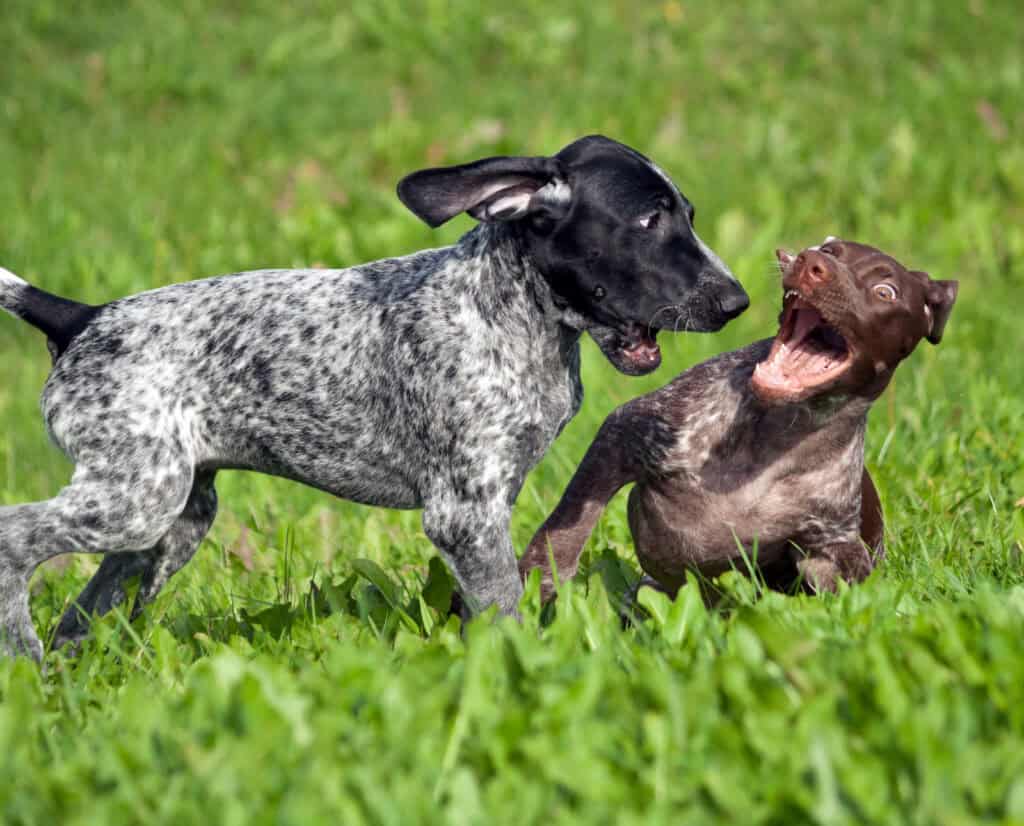
Jennifer Wapenski is the Director of Operations and Managing Partner…
Bringing home your first puppy should involve proper preparation and expectations to make a positive experience for both you and your dog.
You’ve done your research, picked the ideal dog breed, selected a reputable breeder, and now have a much-anticipated date circled on your calendar. Your new puppy will soon arrive in your home, full of unbridled potential and the uncanny ability to create chaos wherever it goes.
Listen to more articles on Apple | Spotify
The weeks before the new pup arrives are the best time to gather supplies, puppy-proof your home, make an early puppy training and socialization plan, and—perhaps most importantly—get the whole family on board with the plan. This early preparation work will go a long way toward ensuring a successful transition into your home and building a solid foundation for your new bird dog.
READ: How Much Does it Cost to Have a Hunting Dog?
Supplies for a New Puppy
As with any other hobby, there is no end to the gear that you can purchase for your new dog. Whether you want to dive in feet-first or pace yourself a bit, there are some essential items to have on day one.
An appropriately-sized dog crate is important to keep your pup out of trouble when unsupervised as well as accelerate your house-training efforts. Dogs are usually unwilling to soil their living area whenever possible, so confining them to a crate helps them to develop the muscle control required to “hold it” in between yard outings. This also means that the crate must be small enough to not allow the puppy to designate separate sleeping and toilet areas. Many brands offer a divider option, which will allow you to adjust the internal volume to grow with your puppy, rather than having to purchase multiple sizes.
Food and food bowls are a given, but check with your breeder to ask what kind of puppy food the litter has been eating. You don’t need to continue feeding that food forever, but you’ll want to make a slow transition from one food to another. Ideally the breeder will send you home with a small amount to help with that transition, but it’s wise to have some on hand anyway.
READ: How do we Navigate the Sport Dog Food Market?
A flat-buckle collar and a leash will help you to have controlled outings with your new puppy. It’s too early for long walks, but never too early to start learning how to walk nicely on a leash. Help your puppy become comfortable with the idea of being restrained but also that leashed walks can lead to fun destinations.
As evidenced by the scratches and punctures on your hands, your puppy is teething and needs somewhere safe to direct all that chewing energy. A small selection of chew toys will help focus all those bites into the correct outlet. Please be aware that all toys should only be played with under supervision. It sounds overdramatic, but a chunk can break off of any toy and cause an obstruction or choking hazard in a matter of seconds. Be safe rather than sorry and keep all play with toys supervised.
Finally, a good enzymatic cleaner can work wonders for cleaning up after the puppy. Even the most vigilant owner can be surprised by a sudden mess, whether it’s urine, feces, vomit, or blood. Enzyme-based cleaners are the best way to clean up any of these organic stains, plus eliminate odors so that the puppy will be less inclined to continue using the same spot as a toilet.

Puppy-Proof Your Home
The law of puppies says that if it can fit in their mouth, it will go in their mouths. Therefore, it’s essential that you carefully assess your living area to make sure it’s safe for a puppy to live and play in.
It’s a good idea to make a smaller area for the pup to access, rather than having unfettered access to your entire house. Use baby gates, an ex-pen, or furniture to block off a smaller area. This will prevent the puppy from identifying its own toilet space within his or her play area.
Do you have houseplants? Do some research to make sure they aren’t toxic to dogs. Better yet, temporarily relocate them out of the puppy’s area so that he or she cannot get to them. They will find a way to chew on the leaves and that’s not when you want to be Googling to determine if it is a safe species or not.
Once you think you’ve puppy-proofed the area, get down on your hands and knees and assess the space from a puppy’s point of view. Where can they go and what can they chew on? Sofa legs and electrical cords are good candidates. Make sure the puppy area is free from these types of tempting chew toys.
Make an Early Training and Socialization Plan
It’s never too early to start teaching your puppy. Dogs thrive on routine and the routine you build in their first days at home can set them up for a lifetime of success.
What will your command list be? Decide on key commands for basic skills such as recall. You don’t have to decide if you’ll someday use an e-collar or if you only want to employ positive reinforcement training methods, but you should be reading up on different techniques to prepare yourself for that decision. It’ll be here before you know it.
There’s a critical socialization window that typically closes around 12-16 weeks of age. That means you have one or two months to get your puppy exposed to as many different scenarios as possible. Have them meet a variety of people to help them become comfortable: men, women, kids, people with glasses, people in wheelchairs, people who smoke… get creative and think of as many variables as possible. Make the encounters short, sweet, and positive.
Socialization with other dogs is important too, but be aware of their vaccination status and assess the risk of exposure versus socialization. Puppy kindergartens can be a great opportunity for controlled socialization; reputable dog schools will require proof of age-appropriate vaccination from all participants.
Once you’ve decided on a list of commands and the type of training you’ll do, do your best to stick with it. There will be lots of well-meaning folks on your path who have used a variety of training methods with great success. By all means listen to their input, but avoid the urge to abandon your methods in favor of something else. That’s not to say you can’t make adjustments along the way—there is always room for learning and improvement—but it won’t benefit your puppy if you are constantly changing training methods or techniques. If you’re at all in doubt, don’t be shy about contacting a professional to get started on the path that’s right for you.

Agree on House Rules and Get Your Family On Board
Consistency is everything for dogs, and consistency starts in the home with all family members. Before your puppy arrives, decide on what your house rules will be. Are dogs allowed on the furniture? Are there any areas that are off-limits? Do dogs need to stop at open doorways and await permission before proceeding? Whatever your rules, make sure that your entire family—kids included—are on board and agree to enforce all rules at all times. Otherwise, the dog will become confused and will generally adopt the least-restrictive set of rules that are routinely enforced.
It’s worth mentioning that house rules aren’t a bad thing for dogs. On the contrary! Dogs can get stressed when the expectations are unclear, but they absolutely thrive when life is predictable and consistent. Help your new pup out by establishing the rules early and sticking to them throughout his or her lifetime.
Relax and Enjoy Your Puppy’s Arrival
When arrival day finally comes, do your best to relax and enjoy the moment. If you’ve done all of your homework ahead of time, there should be nothing left to do except to follow your plan. Your young puppy needs your time and attention—there are wonderful things in store ahead of you, but for now he or she needs to simply adapt to your home and your lifestyle.
Jennifer Wapenski is the Director of Operations and Managing Partner at Project Upland Media Group. She has a lifelong passion for the outdoors, dogs, and wildlife; as an adult, she discovered that upland bird and waterfowl hunting were natural extensions of these interests. What started as initial curiosity soon escalated into a life-changing pursuit of conservation, advocacy, and education. Jennifer serves in a variety of roles such as the Breed Warden for the Deutsch Langhaar—Gruppe Nordamerika breed club and on an advisory committee for the Washington Department of Fish and Wildlife.




REALLY GREAT ARTICLE. how about one for out
doors???